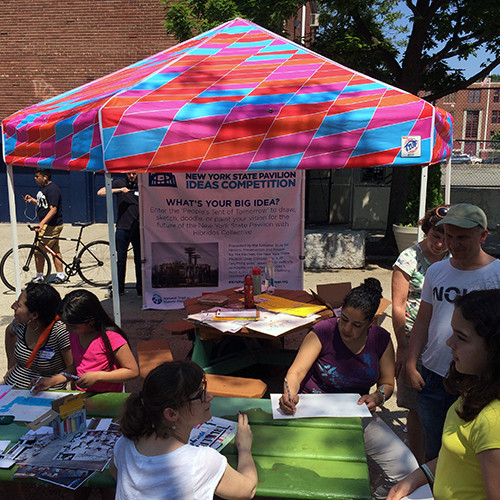HISTORY
The New York State Pavilion is an historic structure originally built for the 1964/1965 World’s Fair in Flushing Meadows-Corona Park, Queens.
Currently closed, this unique and impressive historic structure offers an opportunity to once again serve as a vibrant public space.
DESIGN AND CONSTRUCTION
New York State Governor Nelson Rockefeller commissioned architect Philip Johnson to design the New York State Pavilion, instructing him to design what would be the largest and tallest pavilion at the Fair. Johnson’s aim was to achieve “an unengaged free space as an example of the greatness of New York, rather than a warehouse full of exhibit material.”
Johnson and his partner Richard Foster designed a complex that consisted of three elements: the main open-air structure known as the “Tent of Tomorrow,” three “Astro-View” observation towers, and a circular theater known as the “Theaterama.” Highlighting its underlying spirit of fun, architectural critic Ada Louise Huxtable described the Pavilion as “a sophisticated frivolity…seriously and beautifully constructed. This is a ‘carnival’ with class.”
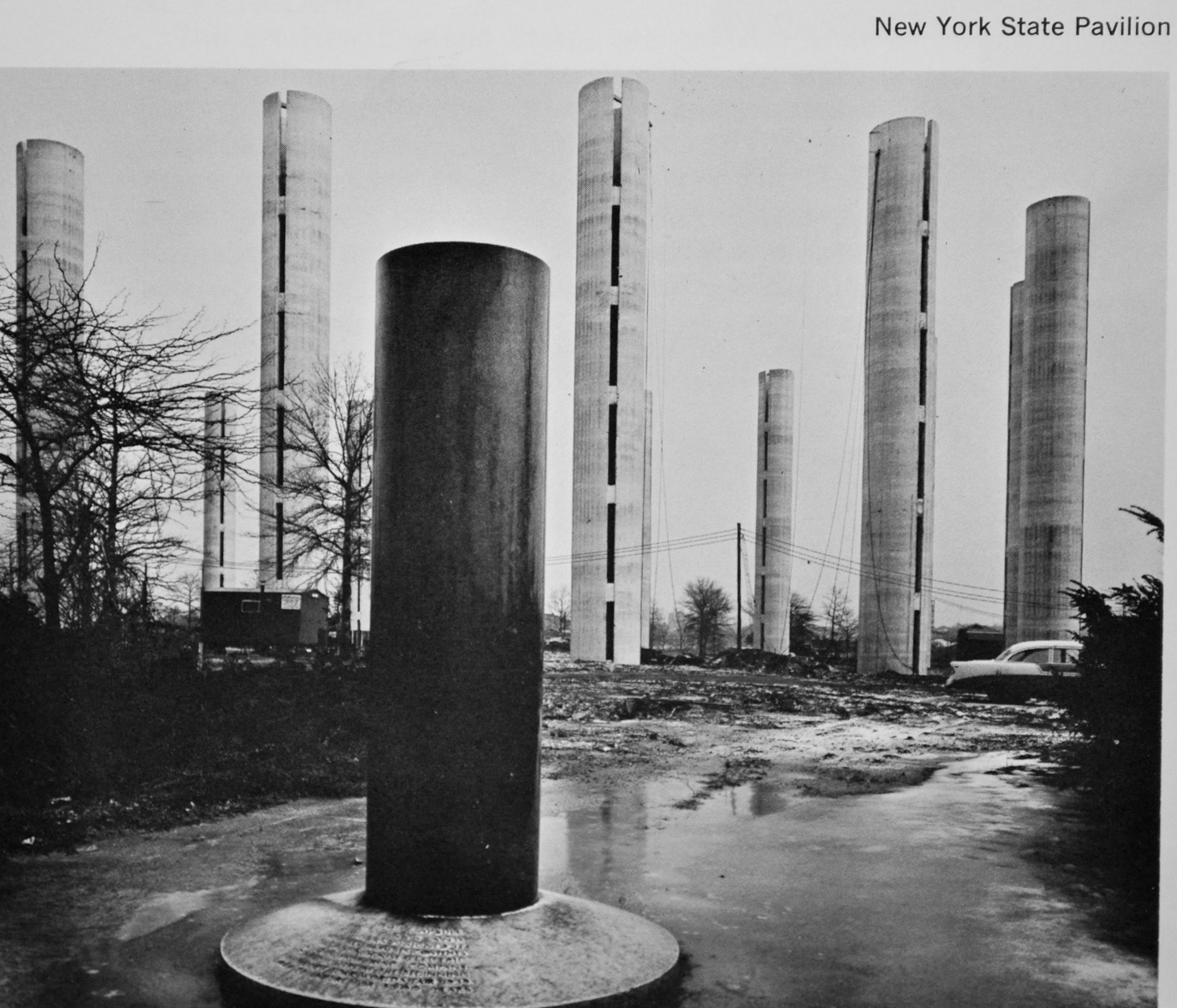
DURING THE FAIR
The New York State Pavilion was designed to showcase all of the varied attractions that the state had to offer, from natural scenery and wildlife to achievements in the fine and performing arts. The Tent of Tomorrow, Astro-View Towers, and Theaterama each housed their own specific exhibits or attractions. Additionally, the Pavilion acted as a civic hub where residents of the state could voice concerns to representative congressmen. The main floor was a hub for activities such as fashion shows and free entertainment by thousands of non-professionals groups. A “kiddy ride” and a small zoo were included to cater to younger guests. The Tent housed a traditional art show with fifty works by New York artists dating from the seventeenth to the nineteenth centuries.
The tallest of the three Astro-View towers stands 226 feet high, and contains two observation platforms, providing unique views of the Manhattan skyline. These observation decks offered fairgoers an exciting panorama of the fairgrounds and surrounding area.
The staggering attendance at the New York State Pavilion is a testament to its popularity: by the end of the second season of the fair in 1965, an estimated 6,000,000 fairgoers had passed through the Pavilion’s gates and walked upon its famous map floor, a 9,000 square-foot terrazzo replica of Texaco’s state road map.
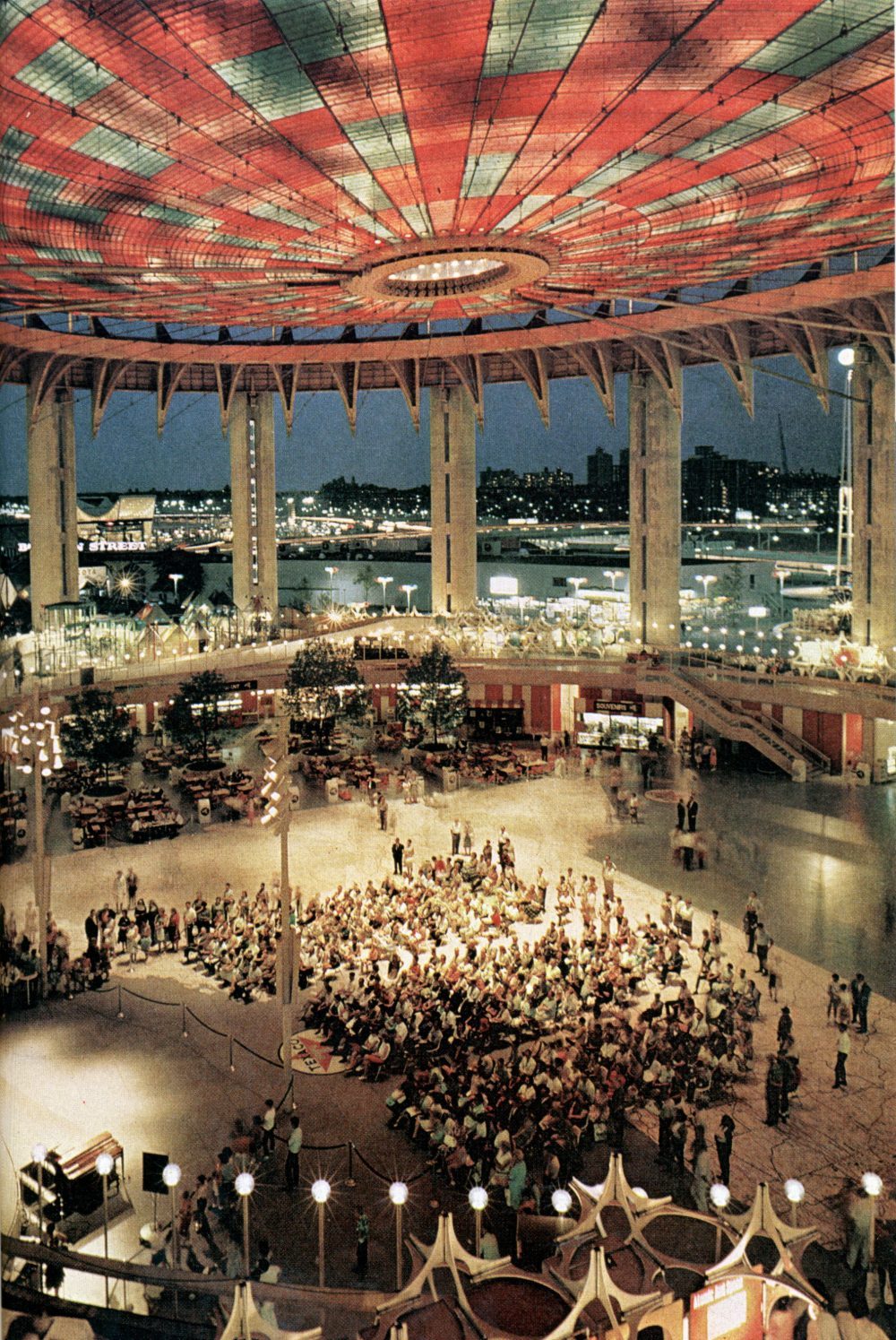
AFTER THE FAIR
An engineering report that detailed a restoration program for the post-fair park suggested the Pavilion’s towers constituted “a natural tourist attraction.” The report proposed that the tent portion of the Pavilion be preserved and indicated that it “would provide a covered area for athletic events, dancing and concerts similar to those which have proved so popular as part of the New York State Exhibit.”
By the summer of 1974, the City ordered the Pavilion to close. In 1976, the City ordered all of the panels to be removed and the tent went roofless. In June 2007, the organization World Monuments Fund listed the New York State Pavilion on its 2008 Watch List of the World’s 100 Most Endangered Sites. The New York State Pavilion Paint Project is an independent group of volunteers who spent years gathering donations of materials and paint to restore dignity to the Pavilion in the hopes of raising awareness about its restoration and reuse.
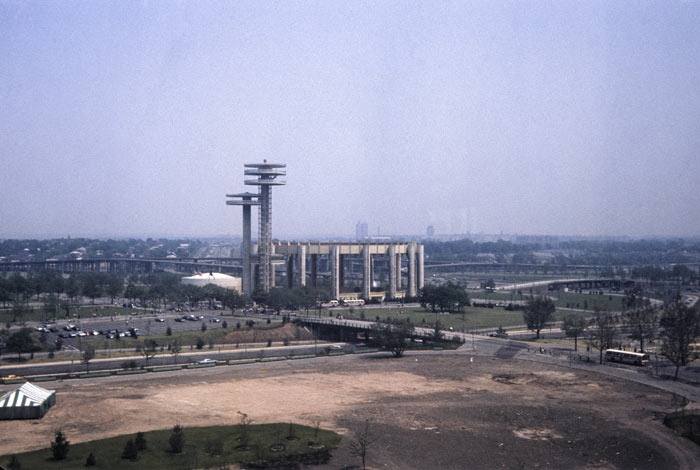
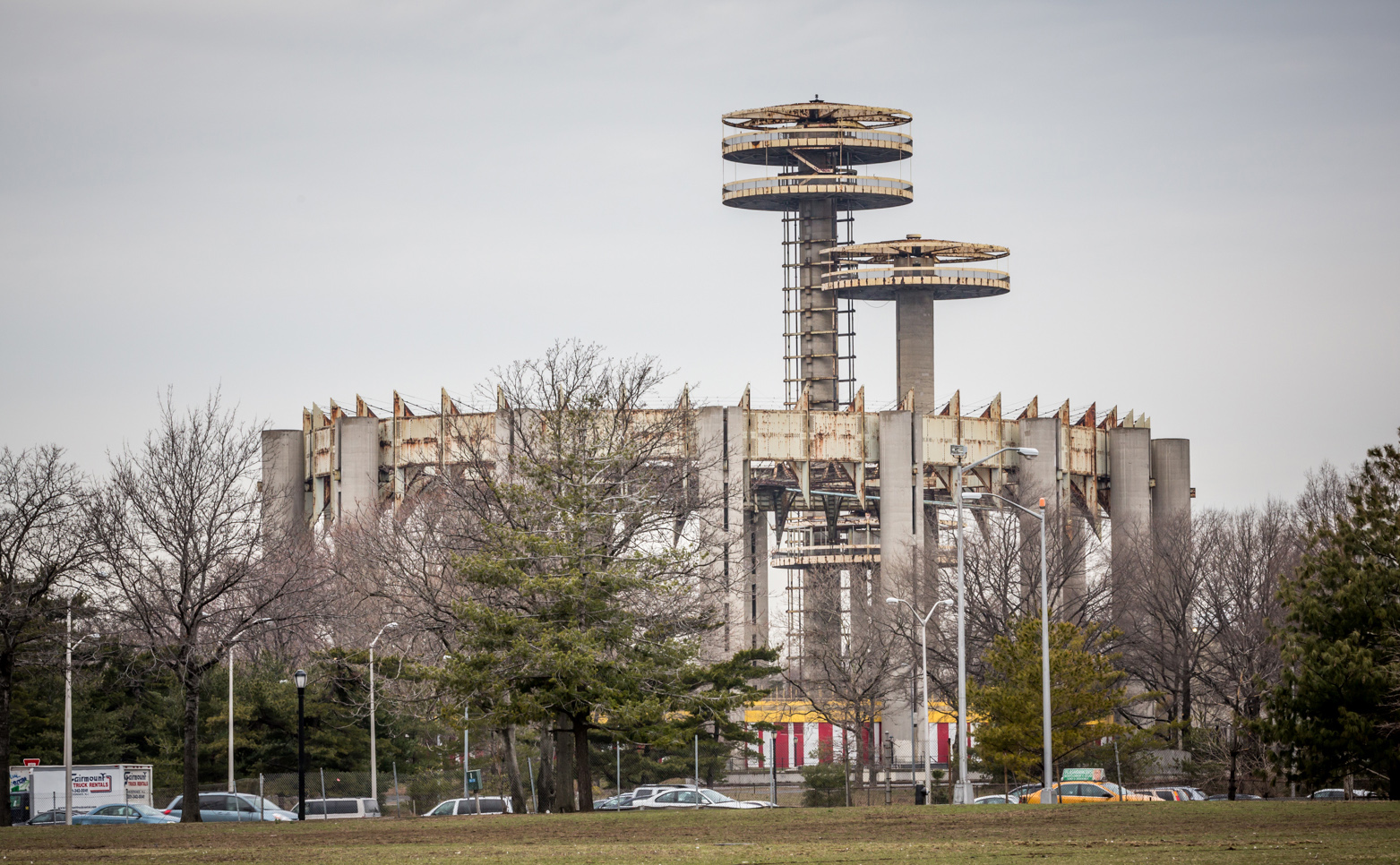
TODAY
Since 2014, People for the Pavilion has been working to raise awareness of the historic value of the New York State Pavilion, and of its potential to serve as a vibrant and functional public space. PFP works to build a community around the Pavilion through public programs, events, and communications, with a focus on individuals, organizations, and institutions around Flushing Meadows Corona Park.
On March 1 2016, People for the Pavilion and the National Trust for Historic Preservation launched the New York State Pavilion Ideas Competition, an “anything goes” approach to radically reimagine one of New York City’s most iconic buildings and a defining landmark of Queens.
Through the competition, People for the Pavilion, the Trust, and Queens Borough President Melinda Katz sought to raise awareness worldwide of the Pavilion and its future, and to engage the residents of Queens in re-imagining one of its most significant assets. In an effort to reduce the usual barriers to entry around competitions, People for the Pavilion and the Trust hosted on-the-ground programs throughout neighborhoods in Queens. Run by Queens-based placemaking organizations RPGA Studio and Hibridos Collective, residents were connected with artists, designers, and planners who helped participants represent their ideas. Read more about the competition at www.NYSPideas.org.

